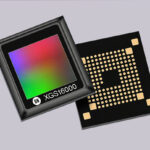ASIA ELECTRONICS INDUSTRYYOUR WINDOW TO SMART MANUFACTURING
Display, Equipment Makers Ramp up Micro LED Development
Considered as post organic light-emitting diode (OLED) displays, micro light-emitting diode (LED) displays are being adopted for practical use. With the development of new manufacturing processes, such as the application of complementary metal-oxide-semiconductor (CMOS), the demand for manufacturing equipment is expected to expand.
Micro LEDs adopt a display method that lays ultrasmall LEDs in the micrometer order. They are self-emitting displays wherein individual LEDs emit light and produce colors and do not require backlight and color filters. As each RGB element is separately controlled, they can accurately express all colors with high brightness level. They exhibit higher brightness, lower power consumption, and longer life compared with liquid crystal and OLED displays.
The market scale of micro LEDs is forecast to grow at an annual growth rate of 89.3 percent, from US$490 million in 2020 to US$18.835 billion in 2026, according to Global Information, Inc. (Aug. 2020). They are expected to create and expand new demand for manufacturing equipment.
Development Race
The practical use of micro LEDs has already started with Samsung Electronics Co., Ltd. taking the lead. Chinese manufacturers, including TCL Corporation, are also active in the development of micro LEDs. In Japan, Sony Corporation, Sharp Corporation, Kyocera Corporation, and Japan Display Inc. have joined the development race.
Samsung Electronics has commercialized a 110-inch micro-LED TV for home use, and is now being deployed in the global market targeting the high-end market following its introduction in Korea.

This summer, Sony will release two series of Crystal LED direct-view micro-LED displays, featuring a large screen with high realistic sensation and premium picture quality.
Manufacturing Methods, Equipment
There are two manufacturing methods for micro LEDs: the chip mounting method for large-screen displays such as TVs, and the wafer bonding method. In the chip mounting method, micro LEDs are formed on a wafer using micro processing. They are then separated to create LED chips, and the chips are mounted on a substrate in which wirings and circuits are formed. In the wafer bonding method, high-resolution LEDs are mounted on a wafer in high density without individually separating them. The wafer is then bonded with a silicon wafer, on which wirings and circuits are formed, to produce a display.
Commissariat à l’énergie atomique et aux énergies alternatives – Laboratoire d’électronique des technologies de l’information (CEA-Leti), a global-scale laboratory for applied research of microelectronics and nanotechnology and is headquartered in France, has announced in the United States a new technology to manufacture gallium-nitride (GaN) micro-LED displays using the CMOS process.
The new technology eliminates the transfer process to mount LED elements on the backplane, and enables the manufacture of displays of various sizes from smart watches to large-screen TVs.
Meanwhile, Sharp has developed a monolithic full-color micro-LED display by bonding a blue (or ultraviolet) LED formed on a sapphire or silicon wafer to a silicon backplane, which becomes the driving circuit.
As for micro-LED manufacturing equipment, leading Japanese manufacturing equipment manufacturers leverage on their specialized technologies in the development and commercialization of manufacturing equipment. Shibaura Mechatronics Corporation has brought to the market a bonder for micro LEDs. TDK Corporation has developed a chip bonder for LEDs. V Technology Co., Ltd. has developed a laser lift-off equipment and LED transfer equipment. Toray Engineering Co., Ltd. has created an FC bonder and laser micro-trimming equipment and Hamamatsu Photonics K.K. has developed a micro-LED inspection system.

Aixtron SE of Germany and Veeco Instruments Inc. of the United States have been vying for a market share of metal organic chemical vapor deposition (MOCVD) systems that are indispensable for the formation of light-emitting layer of LED chips.




